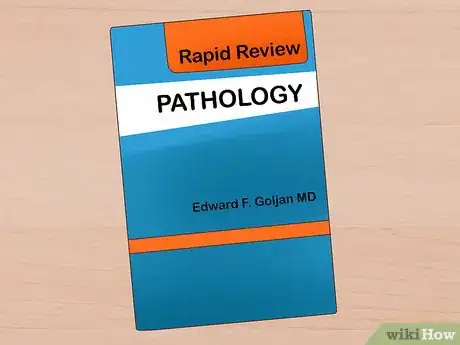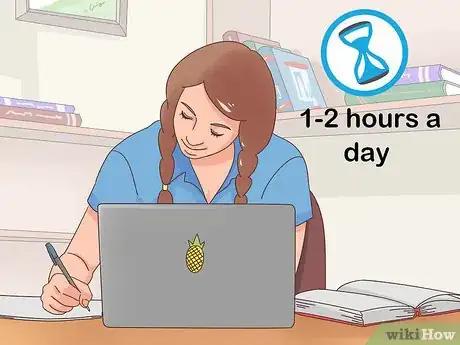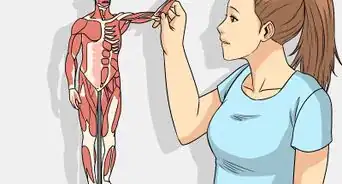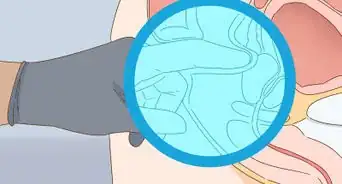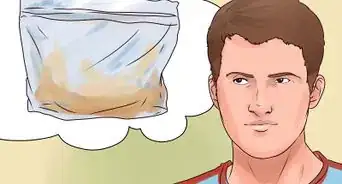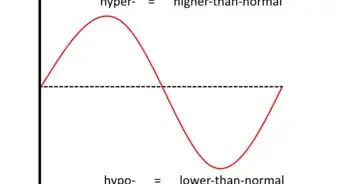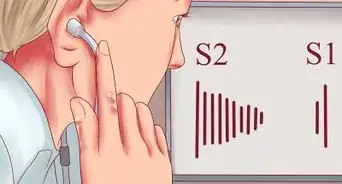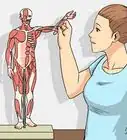This article was co-authored by wikiHow Staff. Our trained team of editors and researchers validate articles for accuracy and comprehensiveness. wikiHow's Content Management Team carefully monitors the work from our editorial staff to ensure that each article is backed by trusted research and meets our high quality standards.
This article has been viewed 38,194 times.
Learn more...
Around the second year of medical school in the United States, students prepare to take the Step 1 exam. Pathology, or the study of diseases, is an important part of that test. Pathoma is a website devoted to covering the in-depth pathology text of Dr. Husain Sattar. To get the most out of Pathoma, you should start by signing up for a full website membership. Then, it’s important to carefully read through the texts and watch the available videos in tandem with your other study activities.[1] https://www.wikihow.com/Study-Pathoma
Steps
Getting the Most Out of Pathoma
-
1Sign up for a Pathoma account. Go to www.Pathoma.com/sign-up. There you can read about the variety of membership options available, including a free 1-month trial. Most med students get the most benefit out of signing up for the 21-month access package, which gives you full video and text access. This also means that you can download materials on to your phone for 24-7 study access.[2]
- To sign up for an account, you’ll need to provide your name, address, and current school affiliation. You’ll also have to agree to be the only user for your account.
- An account costs $84.95 for 3 months, $99.95 for 12 months, or $119.95 for 21 months.
-
2Put together a study group. Find a group of classmates or friends who are at a similar stage in medical school. Create a study schedule that you all can stick with over time. Devote at least a portion of your time each meeting to discussing Pathoma and its materials.[3]
- Some groups also use this as an opportunity to share a single membership to the Pathoma website, although this is prohibited according to the website’s membership terms.
Advertisement -
3Read straight through the text at least once. You can either do this online or with a hard copy of the book. Give yourself ample time to make your way through it in 45-minute reading segments. Try not to take notes this first go-round, just enjoy the material and try to get a feel for the full coverage of the book.[4]
- This is also useful if you are trying to decide between going with Pathoma or Goljan’s Rapid Review.
- The Pathoma text is over 200 pages long, so don’t expect to make your way through it in only a day or 2.
-
4Make a flashcard for all important facts. Each time that you encounter a particular definition, term, or explanation that you need to know by memorization, write it on a notecard. This goes for the material found in the text, study aids, and visual materials. You can also color-code your cards by theme for easy reference.[5]
- For example, you can put each separate definition on a pink card.
- You can even sketch quick illustrations on to the cards. This can be especially useful when studying the cell structure of certain diseases.
- If paper cards aren’t your thing, use Anki or Firecracker to make electronic cards. These can be saved to your phone so that you can study anywhere and anytime.
-
5Teach the Pathoma site to non-medical friends or family. This is a creative way to approach a study session. When you are pretty comfortable with the Pathoma site, sit down with a friend and let them browse through it. Encourage them to ask lots of questions, so that you can explain what they are seeing or hearing. This lets you become the teacher, which is a great way to learn more.[6]
-
6Look at the same information over and over again. Anyone who is familiar with studying complex material knows that repetition is key. Go through your notecards until you can repeat the information back quickly and easily. Read over the same portions of the text multiple times. Watch the videos repeatedly until you can predict what comes next.
Using Pathoma Alongside Other Sources
-
1Compare or use in combination with Goljan. There is another popular pathology text that many med students find useful, Dr. Goljan’s Rapid Review. This is a 700-page book that covers basic topics in pathology. It also explores the connections between pathology and other disciplines, such as microbiology.[7]
- You can also find audio recordings of Goljan’s lectures on YouTube and other websites. Some publishers even include free study materials when you purchase Goljan’s text from them.
-
2Compare and contrast information with first aid. After you finish reading a section in your First Aid text, open your Pathoma materials and see where they overlap. This may help you to understand your First Aid lectures or information more thoroughly. After all, both texts can't cover everything, but working with them together will increase your coverage and retention.[8]
-
3Continue to go to lectures. It’s really tempting to focus all of your attention on Pathoma and other study options and completely (or partially) skip your class sessions. This approach can really backfire. Attending the lectures gives you yet another layer of information. Plus, take this opportunity to write down any questions that you have and look these up later.
-
4Stay curious. Pathoma should be one of the few resources that you immediately turn to if you have a question even tangentially related to pathology. Force yourself to constantly ask questions about what you hear in lectures or have learned from other study sites.
- For example, if you aren’t familiar with a drug’s name, look it up in Pathoma.
Following a Study Plan
-
1Start with Pathoma 1-2 hours each day 2 years out from Step 1. When you still are a year or more away from taking the exam, your goal should be to familiarize yourself with the Pathoma text and website. Get to know its structure by browsing through the materials. Note any and all questions that you have.
- This is also the stage where you should begin to take general notes over the text’s content.
-
2Quiz yourself each day if you are less than a year out from Step 1. This is when you need to transition your studying to fit your test-taking goals. Set aside 30 minutes each day for quizzing yourself over your Pathoma notecards or question sets. Keep track of your weak areas and target those in subsequent days.
- For example, if a certain Pathoma chapter is your weakest subject area, then spend extra time getting it down.
-
3Study 6-8 hours per day when you are 6-12 weeks out from the test. Not all of this study time should be spent on Pathoma, but some of it should. Use Pathoma as a reference as you answer world bank questions. Add new notecards to cover more complex concepts. Watch a Pathoma video segment to break up your on-paper preparation.
- The website www.uworld.com provides a comprehensive collection of questions for students planning to take the Step 1 exam. These questions are generally referred to as “world bank” questions.
Warnings
- It’s easy to overwork yourself when preparing for your Step 1 exam. Make sure to take regular study breaks or even a day off!⧼thumbs_response⧽
References
- ↑ http://www.Pathoma.com/fundamentals-of-pathology
- ↑ https://www.Pathoma.com/sign-up
- ↑ https://prospectivedoctor.com/how-to-study-for-usmle-step-1/
- ↑ https://prospectivedoctor.com/how-to-study-for-usmle-step-1/
- ↑ https://prospectivedoctor.com/how-to-study-for-usmle-step-1/
- ↑ https://prospectivedoctor.com/how-to-study-for-usmle-step-1/
- ↑ http://almost.thedoctorschannel.com/review-study-resources-big-usmle-step-1/#pfPihQKJ3yJE78s8.99
- ↑ https://prospectivedoctor.com/how-to-study-for-usmle-step-1/






